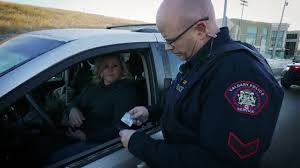What Really Happens During a Traffic Stop
Seeing those red and blue lights spark to life behind you can jolt your nerves instantly. If you’ve ever been pulled over, you know the rush—your stomach tightens,
your mind races, and you start replaying everything you might’ve done wrong. But a traffic stop is far more structured than it appears. It’s a step-by-step process built on training, safety protocol, and situational awareness.
Let’s take a closer look at what unfolds behind the scenes—and why officers follow each step so precisely.
Before the Stop: What Officers Do First
A traffic stop begins long before your car rolls to a halt on the shoulder.

Once an officer spots a potential violation, they run the vehicle’s license plate. This quick check reveals important information: registration status, stolen vehicle reports, owner warrants, or alerts tied to the car.
Officers then contact dispatch to share the vehicle description, location, and number of visible occupants. This creates a safety record—critical if the situation escalates.
Finally, they choose a safe location to initiate the stop. If you notice they follow you for a few moments before turning on their lights, they’re likely waiting for a safer, clearer stretch of road.
Vehicle Positioning: More Strategic Than It Looks
When you pull over, the patrol car doesn’t park behind you by accident. Officers often angle their vehicle a bit outward, creating a protective buffer from moving traffic.
This placement gives the officer cover, increases their visibility, and forms a safe approach path to your window. The turned-out wheels are another built-in layer of protection if a collision occurs.
The Approach: Every Step Has a Purpose
As the officer walks toward your vehicle, the bright spotlight shining in your mirror serves more than one purpose. It illuminates the inside of your car, ensures your hands remain visible, and reduces shadows that could conceal a threat.
Officers observe everything during those few seconds: trunk position, number of passengers, movement inside the car, and overall behavior.
Touching the back of your car? That’s not intimidation—it’s a tactic to leave a physical record connecting the officer to the vehicle.
Depending on traffic or environmental conditions, the officer may approach from the passenger side instead—it’s all about the safest angle.
The Interaction
Once the officer reaches your window, what follows is usually routine. You may be asked to turn off the engine or place your keys on the dashboard so the vehicle can’t be driven off unexpectedly.
They’ll ask for your license, registration, and insurance. Questions might be rephrased or asked again—not because they doubt you, but because officers are trained to look for inconsistencies that might signal distress or danger.
Passengers may also be addressed individually, again as part of standard safety practices.
Safety: For Both the Officer and the Driver
Traffic stops are unpredictable, so both sides must prioritize safety.
Officers manage their body positioning carefully, staying slightly back and to the side to limit vulnerability. Their tone, stance, and hand placement are all deliberate.
Drivers can help by staying calm, keeping hands visible on the wheel, and following instructions. Reaching for documents before being asked can create unnecessary tension.
Common Misunderstandings
Bright lights aren’t personal — they’re for visibility and safety.
Touching your trunk isn’t a threat — it’s a tactical imprint.
Being asked to step out doesn’t always mean trouble — sometimes it’s for clarity or environmental safety.
The Bigger Picture
Those flashing lights don’t signal a trap or a personal attack. They mark the start of a methodical, practiced process aimed at keeping everyone safe. From running your plates to the moment you’re told you can drive off, each step is part of a protocol designed with caution and clarity in mind.
Knowing what happens during a traffic stop can take the fear out of the unknown. Next time you’re pulled over, ease to a safe spot, keep your hands visible, and let the process unfold. Most stops end with nothing more than a brief conversation and a reminder to drive safely.
Conclusion
Traffic stops aren’t about surprising drivers—they’re structured procedures built to protect both officers and the public. Understanding the process can help lower anxiety, make interactions smoother, and ensure everyone stays safe throughout the encounter.
